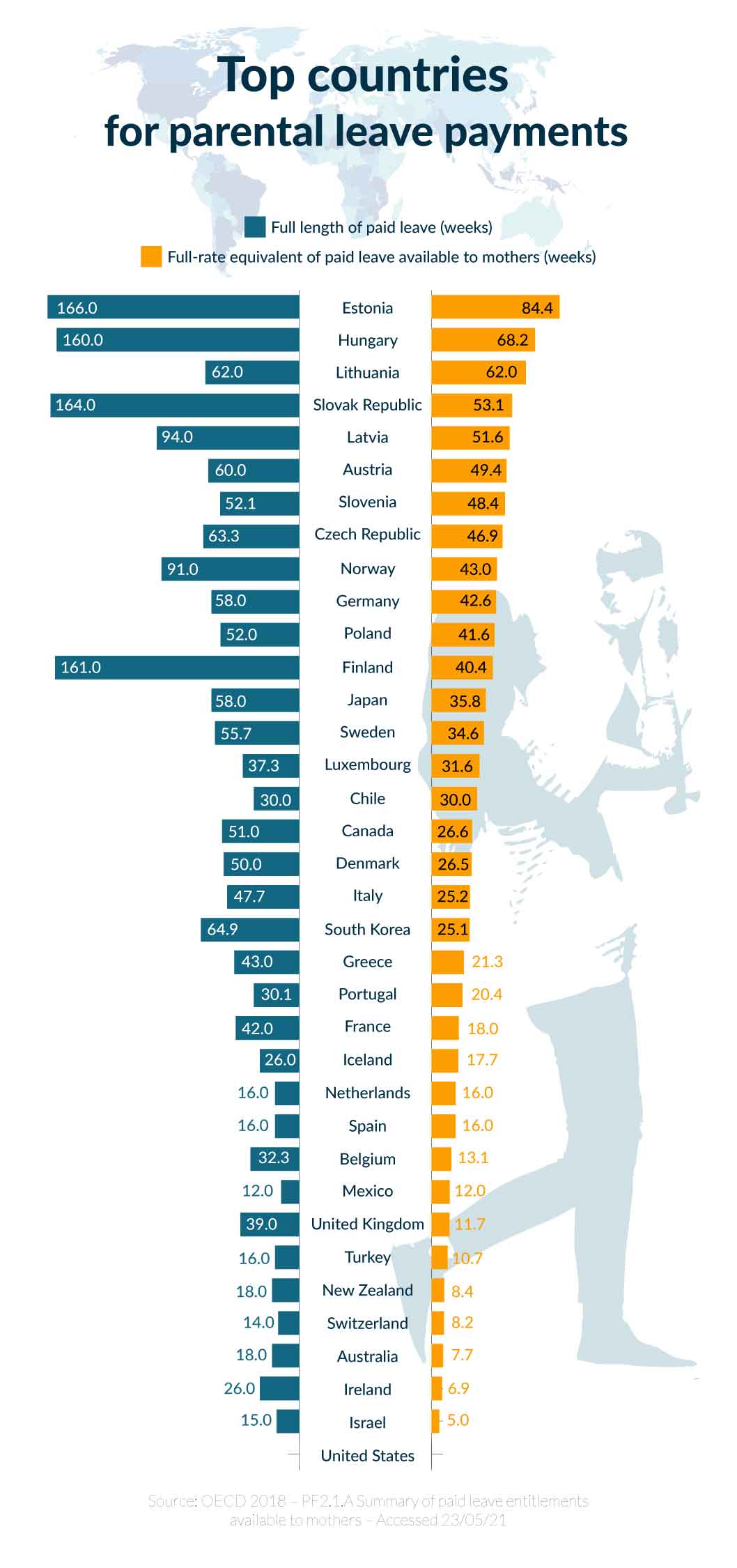Hungary is the 2nd best country to go on parental leave!

Compare the Market analysed where the best is to be a parent in 38 OECD countries.
Here are their top findings:
- Family benefits and paid parental leave across 38 countries have been compared in the latest research by Compare the Market to reveal the best places to be a parent.
- Denmark has the best monetary family benefits, with 3.41% of its GDP dedicated to financial support for parents.
- Estonia leads the way in paid parental leave with 20 weeks of fully compensated paid maternity leave, with an additional 62 weeks (at full compensation) of leave available for one parent.
If it truly ‘takes a village to raise a child’ you’re best off living in Scandinavia or Eastern Europe according to new research by Compare the Market revealing the best countries to be a parent. The comparison website ranked the 38 OECD countries and found Demark and Sweden offered the most generous financial support, while
Estonia and Hungary had the longest paid parental leave programmes.
In terms of benefits, Denmark had the best package, dedicating 3.41% of its GDP to financial support for families.
Many Danish families receive up to two forms of child financial assistance from the time of birth, up to the time when the child turns 18. Single parents are also able to apply for a further child allowance to help with costs. Sweden follows closely behind Denmark, with family benefits public spending coming to 3.40% of the country’s GDP. Swedish parents receive a monthly child allowance from the government, split evenly if there are two parents/guardians until the child is 16 years of age, when the child becomes more financially independent.
Luxembourg was the only non-Scandinavian country to make the top three regarding the best monetary family benefits, with 3.30% of its public spending dedicated to family benefits. In Luxembourg, citizens who have children are entitled to a family allowance, which is intended to help cover the costs of education as well as some living expenses. This allowance runs until either the child finishes schooling or turns 25.
Non-permanent residents who have a child in Luxembourg are also entitled to receive the allowance, with the caveat that the amount will vary according to the policy of their country of residence.
At the other end of the scale was Turkey, where only 0.48% of public spending from the GDP went to family benefits. In the United States and Mexico, this slightly increased to 0.61% and 0.63% of each nation’s GDP respectively.
Compare the Market also considered the data from a parental leave perspective. In this regard, Estonia tops the charts for the most paid annual leave available for parents, with an initial 20 weeks paid maternity leave available for mothers.
The parental leave can begin up to two months before the estimated delivery date, with fathers able to get 2 weeks paid leave after the birth of their child. After the initial leave, one parent can take an additional 62 weeks leave from the end of the maternity leave at full compensation, based on the average of their pay rates.
Hungary comes in second place for maternity leave, with 24 weeks available to mothers, which is compensated at 70% of the normal pay of the mother.
Fathers are also able to take a working week (5 days) leave, which must be used within the first 2 months of the birth. Additionally, one parent is entitled to additional leave until the child reaches 2 years old at 70% of their salary.

Lithuania rounds out the top three with 158 days of paid maternity leave, where mothers get 70 calendar days off prior to birth and another 56 calendar days after birth, which is compensated at 77.58% of the parent’s normal wage.
Lithuanian fathers are also entitled to 30 days paternity leave at the same paid rate of their wage, with a parent able to stay home until the child is 1 year old at 77.58% of their normal wage. Alternatively, this additional leave can be extended until the child is two at the rate of 54.31% of earnings for the first year, and 31.03% for the second year.
Conversely, US parents again get the rough end the of the stick with no paid parental leave entitlements. This slightly improves with Israel (second last) and Ireland (third last), offering 15 and 26 weeks of paid leave to their parents respectively.
To find out how your country’s family benefits, and paid parental leave stack up against other countries, please visit Compare the Market HERE
Source: Press release/Compare the Market






I had parental leave in both Denmark and Hungary. This article is pure manipulation. Hungary support for families is only about stopping mothers to come back to work after giving birth. The paternity leave is a bad joke, the quality of kindergartners is sad, the family subsidies are insufficient, the work-life balance is an unrealistic dream.
Families in Hungary are having less kids than other European countries, and young couples are moving abroad to start a family.
It’s a very sad story to see that Hungary is losing population and qualified workers move abroad because the government is not really caring about families.
And to be honest, we might also move abroad after April 3rd. I am not an oligarch, and I don’t want my kids to live in a dictatorship. So, why would I wish this future to my kids?
you should try it in Portugal too, it’s awesome.. -.-